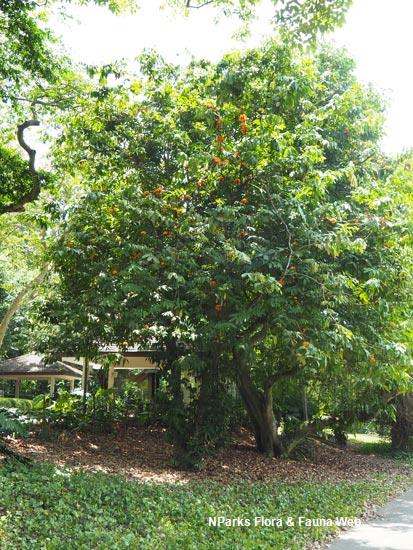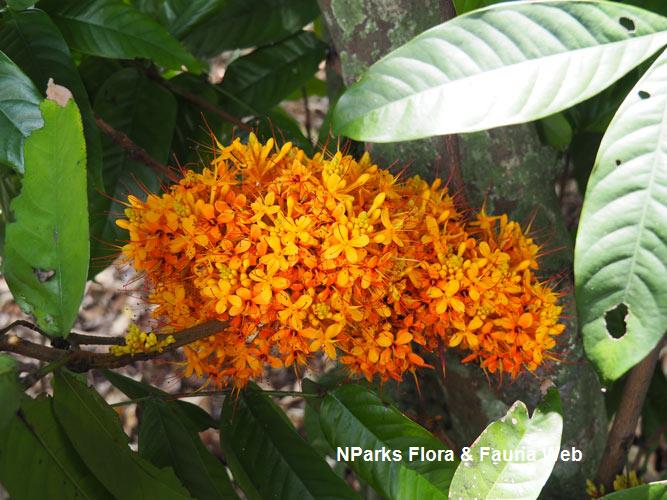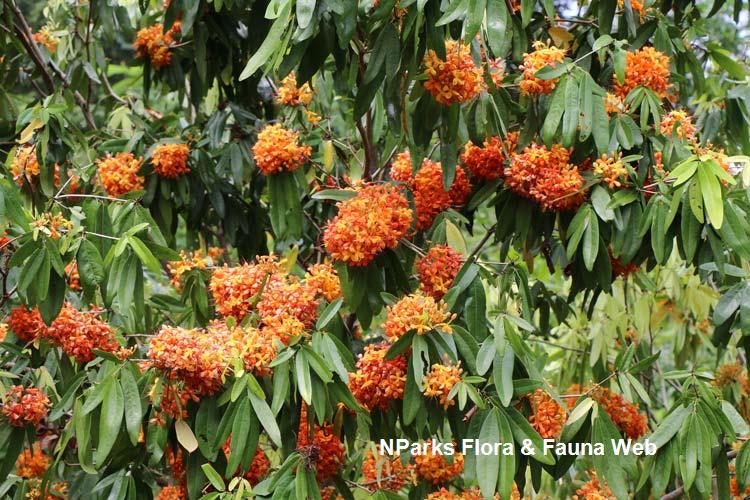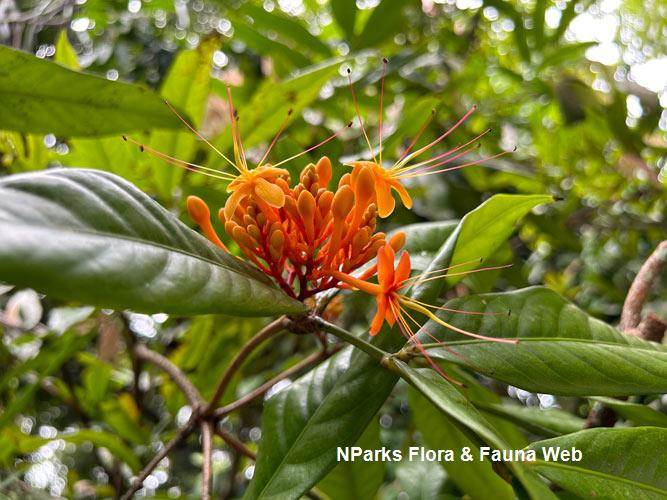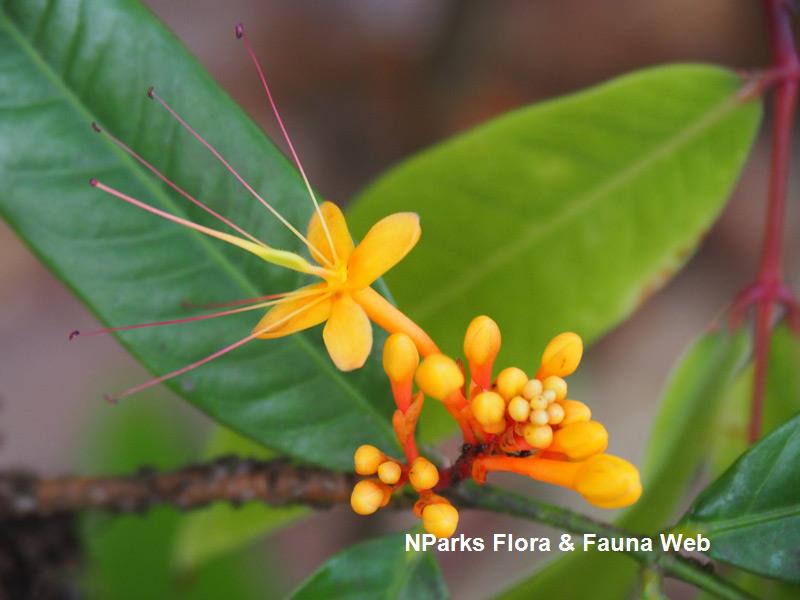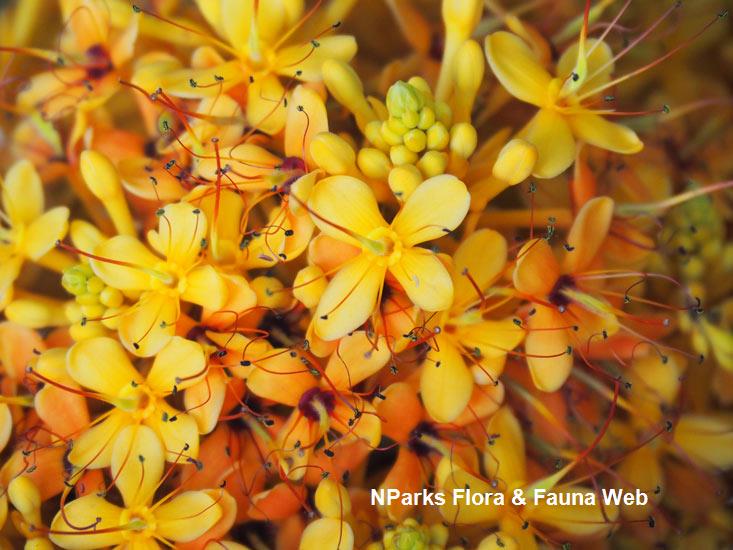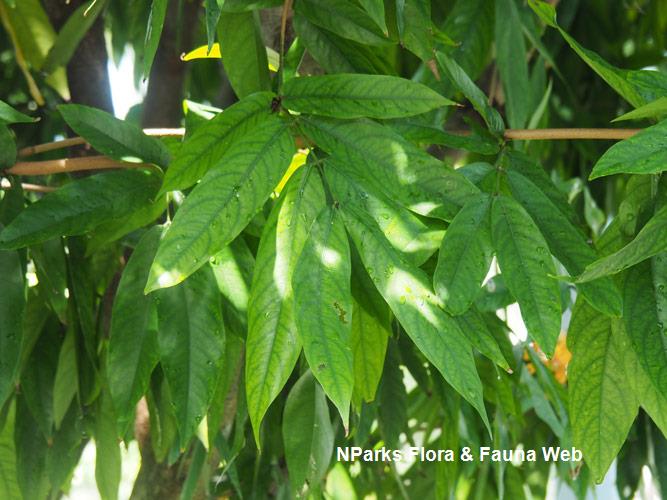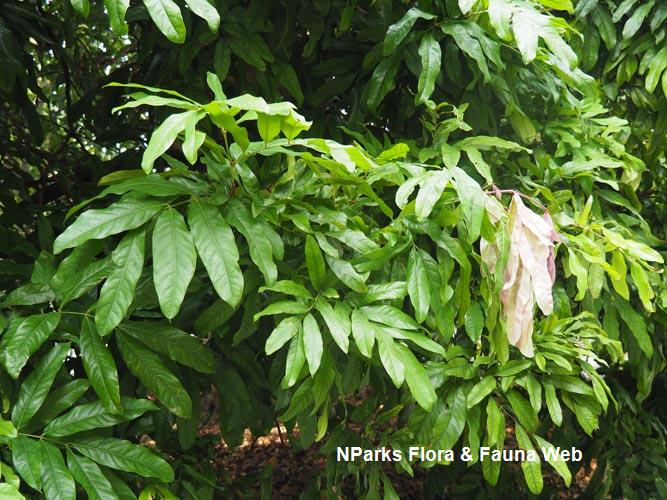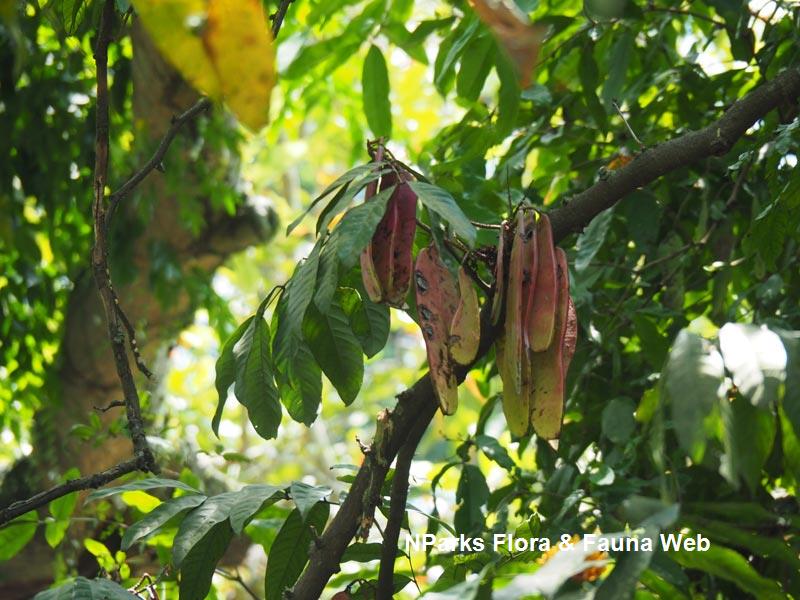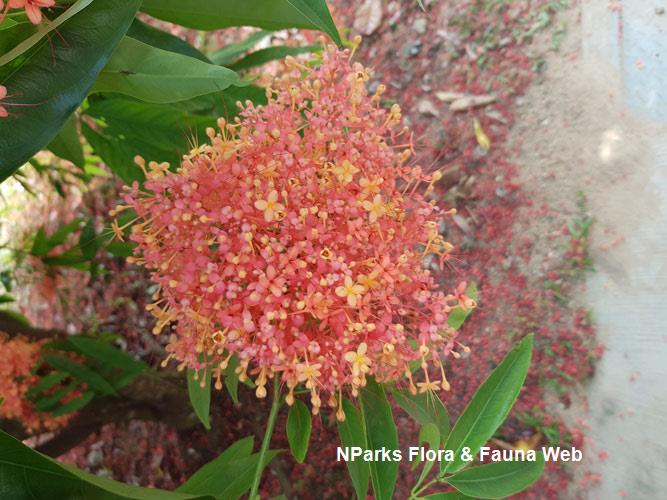
Back
Saraca indica L.
| Family Name: | Fabaceae (Leguminosae) |
| Common Name: | Asoka Tree, Ashoka Tree, Sorrowless Tree, Gapis, 无忧树, 印度无忧树 |
Saraca indica or Asoka Tree, is a tree prized for its large clusters of vibrant flowers. The colours of the flowers vary widely, ranging from orange-yellow to red. Found naturally in rainforests along streams and rivers, it thrives in cultivation when grown under full sunlight and fertile, well-drained soil.
Name
Classifications and Characteristics
| Plant Division | Angiosperms (Flowering Seed Plants) (Dicotyledon) |
|---|---|
| Plant Growth Form | Tree |
| Lifespan (in Singapore) | Perennial |
| Mode of Nutrition | Autotrophic |
| Maximum Height | 24 m |
Biogeography
| Native Distribution | Laos, Vietnam, Thailand, Malaysia, Indonesia |
|---|---|
| Native Habitat | Terrestrial |
| Preferred Climate Zone | Tropical |
| Local Conservation Status | Non-native |
Description and Ethnobotany
| Growth Form | It is a tree, up to 24 m tall. The trunk can reach up to 34 cm in diameter. |
|---|---|
| Foliage | Leaves are compound and paripinnate. Each leaf has (1–) 2 – 4 (– 7) pairs of leaflets. Leaflet is elliptic-ovate to lanceolate, measuring (5–) 15 – 20 (– 30) long and (1.5–) 3.5 – 6 (– 11) cm wide. The leaflet tip is sharply pointed (acute) to obtuse while the base is rounded, cordate or wedged shaped. The pair of leaflets closed to the leaf stalk is usually smaller than the rest of the leaflets. Young leaves flush white, pink or purple and hang pendulously like a tassel. They gradually turn green as they mature. |
| Flowers | Inflorescence is branched (corymb), measuring 3 – 15 (– 20) cm wide, and usually comprises of a blend of various colours simultaneously. The flower’s colour is variable, ranging from orange-yellow, deep orange, purple and red, and may have a darker eye in the center. Each flower is accompanied by a slightly upright and spreading bracteole (0.3 – 0.8 cm long) which can persist or fall off during flower maturity. The flower stalk spans about (0.4 –) 1.2 – 2 (– 3.5) cm long. Each flower has (5 –) 6 – 8 (– 10) stamens. The filament, especially the basal parts, is often covered with fine hairs. The flowers may have a subtle fragrance. The tree is observed to bloom several times a year in Singapore. |
| Fruit | The woody fruit pod is oval or oblong-lanceolate (about 6 – 25 cm long and 2 – 6 cm wide) with a beaked tip (about 1 cm long). Fruit pods coil and split into two when ripe. |
| Habitat | It is found in tropical forests and swamp forests, often along streams and occasionally on limestone, up to 900 m altitude. |
| Associated Fauna | It is pollinated by insects. |
| Etymology | The genus epithet is derived from the Indian Sanskrit name Asoka. The specific epithet, in Latin, refers to India, one of the locations previously thought to be its place of origin. |
| Ethnobotanical Uses | Timber & Products: The wood is sometimes used to make small utensils, pallets, veneer and plywood. Others: It is commonly cultivated in Singapore for its ornamental flowers. In Thailand, the flowers are sometimes eaten by indigenous villagers and said to taste sourish. <2> |
Landscaping Features
| Landscaping | It is commonly cultivated in Singapore for its ornamental flowers. |
|---|---|
| Desirable Plant Features | Fragrant, Ornamental Flowers |
| Landscape Uses | Suitable for Roadsides, General, Parks & Gardens |
Fauna, Pollination and Dispersal
| Fauna Pollination Dispersal Associated Fauna | Bee-Attracting |
|---|---|
| Pollination Method(s) | Biotic (Fauna) |
Plant Care and Propagation
| Light Preference | Full Sun |
|---|---|
| Water Preference | Moderate Water |
| Plant Growth Rate | Moderate |
| Rootzone Tolerance | Fertile Loamy Soils, Well-Drained Soils |
| Maintenance Requirements | Moderate |
| Propagation Method | Seed |
Foliar
| Foliage Retention | Evergreen |
|---|---|
| Mature Foliage Colour(s) | Green |
| Mature Foliage Texture(s) | Leathery, Papery |
| Prominent Young Flush Colour(s) | Cream / Off-White, Pink, Purple |
| Foliar Type | Compound |
| Foliar Venation | Pinnate / Net |
| Foliar Margin | Entire |
| Foliar Apex - Tip | Acute, Obtuse |
| Foliar Base | Cordate, Cuneate, Rounded / Obtuse |
| Typical Foliar Area | Mesophyll ( 45cm2 - 182.25 cm2 ) |
| Leaf Area Index (LAI) for Green Plot Ratio | 4.0 (Tree - Dense Canopy) |
Non - Foliar and Storage
| Trunk Type (Non Palm) | Woody |
|---|---|
| Stem Type & Modification | Woody |
| Root Type | Underground |
Floral (Angiosperm)
| Flower & Plant Sexuality | Bisexual Flowers |
| Flower Colour(s) | Orange, Red, Yellow / Golden, Purple |
|---|---|
| Flowering Period | A Few Times Yearly |
| Flowering Habit | Polycarpic |
| Inflorescence Size Remarks | Yellow (when young) to orange to red |
Fruit, Seed and Spore
| Fruit Classification | Simple Fruit |
|---|---|
| Fruit Type | Dehiscent Dry Fruit , Legume / Pod |
References
| References | <1> Ding, Hou., Leiden, K., Larsen, K. & Larsen, S.S. (1996). Caesalpinioideae (LeguminosaeCaesalpinioideae). Flora Malesiana Series 1 Vol 12 (2) pg 409 – 730. <2> Larsen, K., Larsen, S.S., and Vidal, J.E. (1984). Leguminosae–Caesalpinioideae. In: Smitinand, T. & Larsen, K. (eds) Flora of Thailand. Vol. 4 (1), pp. 1 – 129. Bangkok: The Forest Herbarium, Royal Forest Department. |
|---|
Image Repository
Others
| Master ID | 1820 |
|---|---|
| Species ID | 3113 |
| Flora Disclaimer | The information in this website has been compiled from reliable sources, such as reference works on medicinal plants. It is not a substitute for medical advice or treatment and NParks does not purport to provide any medical advice. Readers should always consult his/her physician before using or consuming a plant for medicinal purposes. |


